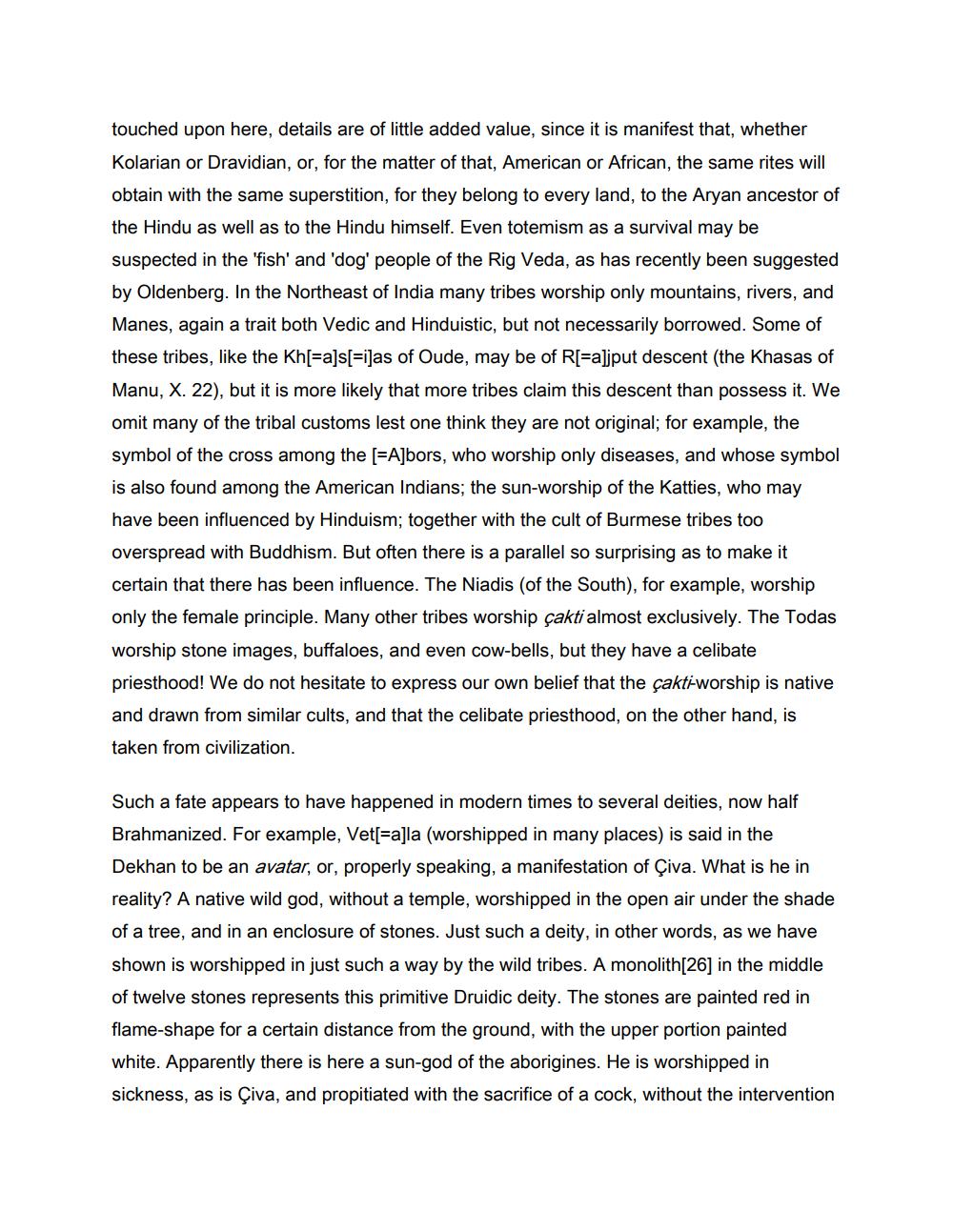________________
touched upon here, details are of little added value, since it is manifest that, whether Kolarian or Dravidian, or, for the matter of that, American or African, the same rites will obtain with the same superstition, for they belong to every land, to the Aryan ancestor of the Hindu as well as to the Hindu himself. Even totemism as a survival may be suspected in the 'fish' and 'dog' people of the Rig Veda, as has recently been suggested by Oldenberg. In the Northeast of India many tribes worship only mountains, rivers, and Manes, again a trait both Vedic and Hinduistic, but not necessarily borrowed. Some of these tribes, like the Kh[=a]s[=ilas of Oude, may be of R[=aljput descent (the Khasas of Manu, X. 22), but it is more likely that more tribes claim this descent than possess it. We omit many of the tribal customs lest one think they are not original; for example, the symbol of the cross among the [=A]bors, who worship only diseases, and whose symbol is also found among the American Indians; the sun-worship of the Katties, who may have been influenced by Hinduism; together with the cult of Burmese tribes too overspread with Buddhism. But often there is a parallel so surprising as to make it certain that there has been influence. The Niadis (of the South), for example, worship only the female principle. Many other tribes worship çakti almost exclusively. The Todas worship stone images, buffaloes, and even cow-bells, but they have a celibate priesthood! We do not hesitate to express our own belief that the çakti-worship is native and drawn from similar cults, and that the celibate priesthood, on the other hand, is taken from civilization.
Such a fate appears to have happened in modern times to several deities, now half Brahmanized. For example, Vet[=a]la (worshipped in many places) is said in the Dekhan to be an avatar, or, properly speaking, a manifestation of Civa. What is he in reality? A native wild god, without a temple, worshipped in the open air under the shade of a tree, and in an enclosure of stones. Just such a deity, in other words, as we have shown is worshipped in just such a way by the wild tribes. A monolith[26] in the middle of twelve stones represents this primitive Druidic deity. The stones are painted red in flame-shape for a certain distance from the ground, with the upper portion painted white. Apparently there is here a sun-god of the aborigines. He is worshipped in sickness, as is Çiva, and propitiated with the sacrifice of a cock, without the intervention




